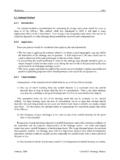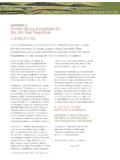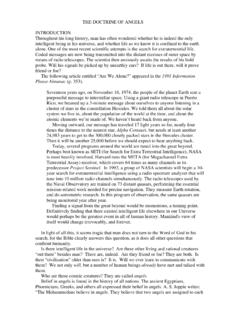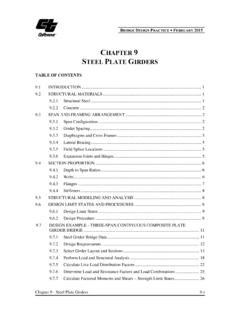Transcription of Rational design of cationic lipids for siRNA delivery
1 Letters Rational design of cationic lipids for siRNA delivery Sean C Semple1,6, Akin Akinc2,6, Jianxin Chen1,5, Ammen P Sandhu1, Barbara L Mui1,5, Connie K Cho1, Dinah W Y Sah2, Derrick Stebbing1, Erin J Crosley1, Ed Yaworski1, Ismail M Hafez3, J Robert Dorkin2, June Qin2, Kieu Lam1, Kallanthottathil G Rajeev2, Kim F Wong3, Lloyd B Jeffs1, Lubomir Nechev2, Merete L Eisenhardt1, Muthusamy Jayaraman2, Mikameh Kazem3, Martin A Maier2, Masuna Srinivasulu4, Michael J Weinstein2, Qingmin Chen2, Rene Alvarez2, Scott A Barros2, Soma De2, Sandra K Klimuk1, Todd Borland2, Verbena Kosovrasti2, William L Cantley2, Ying K Tam1,5, Muthiah Manoharan2, Marco A Ciufolini4, Mark A Tracy2, Antonin de Fougerolles2, Ian MacLachlan1, Pieter R Cullis3, Thomas D Madden1,5 & Michael J Hope1,5. 2010 Nature America, Inc. All rights reserved. We adopted a Rational approach to design cationic lipids for s ilencing complex. To date, formulation in lipid nanoparticles (LNPs).
2 Use in formulations to deliver small interfering RNA ( siRNA ). represents one of the most widely used strategies for in vivo delivery Starting with the ionizable cationic lipid 1,2-dilinoleyloxy-3- of siRNA1,2. LNPs represent a class of particles comprised of different dimethylaminopropane (DLinDMA), a key lipid component of lipid compositions and ratios as well as different sizes and structures stable nucleic acid lipid particles (SNALP) as a benchmark, formed by different methods. A family of LNPs, SNALP3 6, is charac . we used the proposed in vivo mechanism of action of ionizable terized by very high siRNA -encapsulation efficiency and small, cationic lipids to guide the design of DLinDMA-based lipids uniformly sized particles, enabled by a controlled step-wise dilution with superior delivery capacity. The best-performing lipid methodology. LNPs, including SNALP, have been successfully used to recovered after screening (DLin-KC2-DMA) was formulated silence therapeutically relevant genes in nonhuman primates6 8 and and characterized in SNALP and demonstrated to have are currently being evaluated in several clinical trials.
3 In vivo activity at siRNA doses as low as mg/kg in rodents An empirical, combinatorial chemistry based approach recently and mg/kg in nonhuman primates. To our knowledge, this identified novel materials for use in LNP systems7. A key feature of represents a substantial improvement over previous reports of this approach was the development of a one-step synthetic strategy in vivo endogenous hepatic gene silencing. that allowed the rapid generation of a diverse library of ~1,200 com- pounds. This library was then screened for novel materials capable A key challenge in realizing the full potential of RNA interference of mediating efficient delivery of siRNA in vitro and in vivo. Here, we (RNAi) therapeutics is the efficient delivery of siRNA , the molecules instead used a medicinal chemistry (that is, structure-activity relation- that mediate RNAi. The physicochemical characteristics of siRNA ship) approach, guided by the putative in vivo mechanism of action high molecular weight, anionic charge and hydrophilicity prevent of ionizable cationic lipids , for Rational lipid design .
4 Specifically, passive diffusion across the plasma membrane of most cell types. we hypothesized that after endocytosis, the cationic lipid interacts Therefore, delivery mechanisms are required that allow siRNA to with naturally occurring anionic phospholipids in the endosomal enter cells, avoid endolysosomal compartmentalization and localize membrane, forming ion pairs that adopt nonbilayer structures and in the cytoplasm where it can be loaded into the RNA-induced disrupt membranes (Fig. 1)9 12. We previously advanced the concept Figure 1 Proposed mechanism of action for membrane disruptive effects of Headgroup + + . cationic lipids and structural diagram of DLinDMA divided into headgroup, Linker linker and hydrocarbon chain domains. In isolation, cationic lipids and endosomal membrane anionic lipids such as phosphatidylserine adopt a cylindrical molecular shape, which is compatible with packing in a bilayer Hydrocarbon configuration.
5 However, when cationic and anionic lipids are mixed together, Cylindrical shape supports Cone shape disrupts chains they combine to form ion pairs where the cross-sectional area of the combined bilayer structure bilayer structure headgroup is less than that of the sum of individual headgroup areas in isolation. The ion pair therefore adopts a molecular cone' shape, which promotes the formation of inverted, nonbilayer phases such as the hexagonal HII phase illustrated. Inverted phases do not support bilayer structure and are Bilayer Hexagonal HII DLinDMA. associated with membrane fusion and membrane disruption9,21. 1 Tekmira Pharmaceuticals, Burnaby, British Columbia, Canada. 2 Alnylam Pharmaceuticals, Cambridge, Massachusetts, USA. 3 Department of Biochemistry and Molecular Biology and 4 Department of Chemistry, University of British Columbia, Vancouver, British Columbia, Canada. 5 Present address: Alcana Technologies, Vancouver, British Columbia, Canada.
6 6 These authors contributed equally to this work. Correspondence should be addressed to or Received 16 September 2009; accepted 17 December 2009; published online 17 January 2010; nature biotechnology advance online publication . letters a b Figure 2 In vivo evaluation of novel cationic lipids . (a) Silencing activity of DLinDAP ( ), DLinDMA ( ), DLin-K-DMA ( ) and DLin- 120 120. Relative serum factor VII. Relative serum factor VII. 100 100. KC2-DMA ( ) screening formulations in the mouse Factor VII model. All LNP- siRNA systems were prepared using the preformed vesicle protein (%). protein (%). 80 80. (PFV) method and were composed of ionizable cationic lipid, DSPC, 60 60. cholesterol and PEG-lipid (40:10:40:10 mol/mol) with a Factor 40 40. VII siRNA /total lipid ratio of ~ (wt/wt). Data points are expressed 20 20. as a percentage of PBS control animals and represent group mean 0 0. 1 10 100 1 10 (n = 5) , and all formulations were compared within the same Factor VII siRNA dose (mg/kg) Factor VII siRNA dose (mg/kg) study.
7 (b) Influence of headgroup extensions on the activity of DLin-K-DMA. DLin-K-DMA ( ) had additional methylene groups added c Me2N O. O. R. between the DMA headgroup and the ketal ring linker to generate Me2N O R. O R O R DLin-KC2-DMA ( ), DLin-KC3-DMA ( ) and DLin-KC4-DMA ( ). The DLinDMA. O. DLinDAP activity of PFV formulations of each lipid was assessed in the mouse O R. O R O R. O R Factor VII model. Data points are expressed as a percentage of PBS. R. Me2N O. R. Me2N O R Me2N O. R. Me2N O. control animals and represent group mean (n = 4) (c) Chemical structures of novel cationic lipids . DLin-K-DMA DLin-KC2-DMA DLin-KC3-DMA DLin-KC4-DMA. R=. of using ionizable cationic lipids with pKas < pH to efficiently investigate the impact of increasing the number of cis double bonds formulate nucleic acids at low pH and maintaining a neutral or low in the hydrocarbon chains found the linoleyl lipid containing two 2010 Nature America, Inc. All rights reserved.
8 cationic surface charge density at pH (ref. 13). This strategy should double bonds per hydrocarbon chain (DLinDMA) to be optimal 15. provide better control of the circulation properties of these systems We therefore maintained the linoleyl hydrocarbon chains present in and reduce nonspecific disruption of plasma membranes. As posi- DLinDMA as an element in our lipid design , and focused on optimiz- tive charge density is minimal in the blood but increases substan- ing the linker and headgroup moieties. tially in the acidic environment of the endosome, this should activate The linker region in a bilayer structure resides at the membrane the membrane-destabilizing property of the LNP. Although these interface, an area of transition between the hydrophobic membrane attributes may account for the activity of these systems upon inter- core and hydrophilic headgroup surface. Our approach to linker nalization by hepatocytes, they do not necessarily explain the high modification of DLinDMA involved introducing groups expected to levels of hepatic biodistribution observed for many LNPs, including exhibit different rates of chemical or enzymatic stability and to span SNALP.
9 Although these LNPs do not specifically include a targeting a range of hydrophilicity. A variety of these rationally designed lipids ligand to direct them to hepatocytes after systemic administration, were made, characterized and tested (Supplementary Syntheses 1 and it is possible that these LNPs associate with one or more proteins in Supplementary Table 1). LNPs based on the ester-containing lipid plasma that may promote hepatocyte endocytosis. DLinDAP showed substantially reduced in vivo activity compared The ionizable cationic lipid DLinDMA has proven to be highly to LNPs based on the alkoxy-containing lipid DLinDMA (Fig. 2). effective in SNALP, has been extensively tested in rodents and non- Further, LNPs based on DLin-2-DMAP, a lipid with one alkoxy link- human primates, and is now being evaluated in human clinical age and one ester linkage, yielded activity intermediate between trials. Therefore, we selected it as the starting point for the design DLinDAP- and DLinDMA-based LNPs (Supplementary Table 1).
10 And synthesis of novel lipids . We chose the mouse Factor VII model 7, Although it is uncertain why the ester-containing lipids are consid- as the primary in vivo screening system to assess functional LNP- erably less active in vivo, we speculate that the diester lipid (DLinDAP). mediated delivery to hepatocytes. Briefly, C57BL/6 mice received is relatively inactive because it is more readily hydrolyzed in vivo a single dose of LNP-formulated Factor VII siRNA through bolus than the alkoxy analog (DLinDMA), and therefore, unable to either tail vein injection and serum was collected from animals 24 h after protect the siRNA adequately before release from the endosome administration to analyze Factor VII protein level. The initial screen- and/or survive long enough in the endosome to disrupt the mem- ing of LNP- siRNA systems was conducted using LNPs prepared by brane. These hypotheses are being investigated. LNPs based on lipids a preformed vesicle method14 and composed of ionizable cationic containing carbamate or thioether linkages also resulted in dramati- lipid, distearoylphosphatidylcholine (DSPC), cholesterol and PEG- cally reduced in vivo activity.






